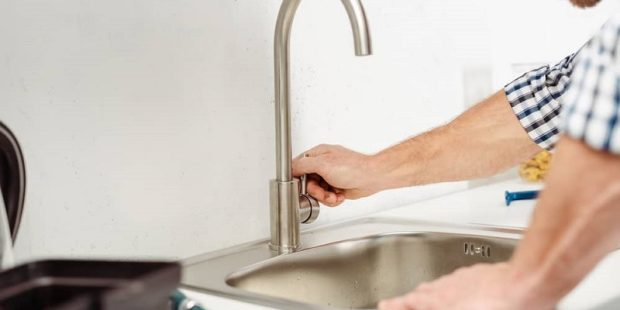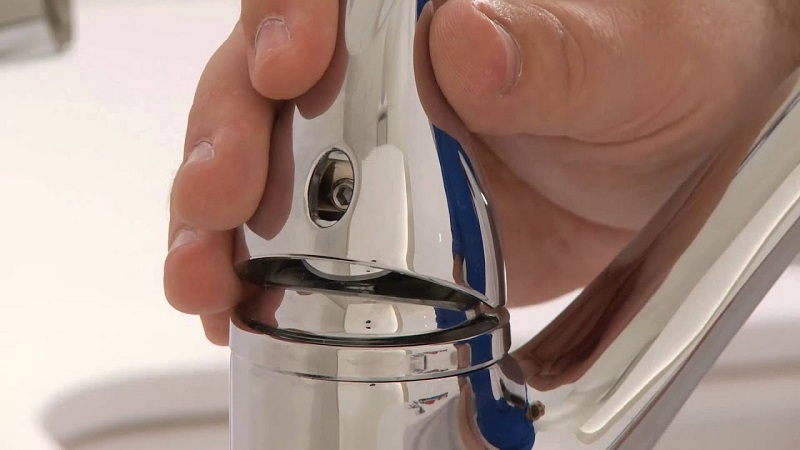
Screwless faucet handles are a sleek and modern addition to any bathroom or kitchen. These handles offer a seamless appearance, but when it comes time to make repairs or clean, you might find yourself wondering how to remove them without a visible screw. Fear not, for we’ve got you covered with a comprehensive guide on how to effortlessly remove a screwless faucet handle. Whether you’re a DIY enthusiast or just looking to tackle a common household task, our step-by-step instructions will ensure a successful outcome. This article is presented by Esscnyc.com.
Identify the Type of Mount
Before embarking on the removal process, it’s crucial to determine the type of mount your faucet handle possesses. There are primarily two types of mounts that you might encounter. Let’s discover the steps to remove shower handle.
1. Cap-Covered Screw
Some screwless faucet handles have a discreet cap that conceals the screw beneath. To initiate the removal procedure, follow these steps:
Remove the Cap
Gently take a flat screwdriver and delicately pry off the cap. The cap serves as a cover, masking the screw that secures the handle in place. Once you’ve removed the cap, the screw will be revealed, ready for the next step.
Remove the Screw
Now that the screw is unveiled, utilize an Allen wrench or a small screwdriver to carefully extract the screw. Pay attention to avoid stripping the screw head, as this could complicate the process.
Remove the Handle
With the screw out of the way, you can proceed to detach the faucet handle. Employ your hand or pliers to gently wiggle and lift off the handle. If the handle is resistant, a handle puller tool can be your best friend in easing it off.
Cleanse the Faucet
Upon removing the handle, you might discover mineral deposits lurking underneath. Fear not, as a natural solution can save the day. Treat those deposits by applying lemon juice or distilled white vinegar, making the cleansing process a breeze.
Reassemble the Faucet
Once the cleaning is complete, it’s time to put the pieces back together. Reinsert the cartridge and reassemble the components just as you disassembled them. This process is essentially a reversal of the steps you took to remove the handle, ensuring that everything is back in place and secure.
Threaded Trim
In some instances, your faucet handle might feature a trim that threads onto the valve. Should this be the case, follow these instructions:
Grasp and Rotate
To detach the handle with a threaded trim, hold the handle in one hand and the trim in the other. Then, gently rotate the trim counterclockwise to unthread it. This method requires a steady hand and a bit of patience, but it’s an effective approach to successfully removing the handle.
Conclusion
Removing a screwless faucet handle might seem daunting at first, but armed with the right knowledge and a little patience, it becomes a straightforward process. By identifying the type of mount, carefully removing the cap, screw, and handle, cleaning the faucet, and reassembling the components, you can ensure your faucet remains functional and free from mineral buildup. With this guide in your toolkit, you’re well-equipped to tackle this task with confidence.
FAQs
Can I use any type of screwdriver to remove the cap?
While a flat screwdriver is commonly used, it’s important to choose one that fits the cap’s dimensions to prevent any damage.
What if the screw is stuck or difficult to remove?
Applying a penetrating oil to the screw can help loosen it, making removal easier. Allow the oil to sit for a few minutes before attempting to unscrew.
Is it necessary to clean the faucet after removing the handle?
Cleaning the faucet is recommended, especially if you encounter mineral deposits. This ensures optimal functionality and prevents any buildup that might affect water flow.
Can I reassemble the faucet components in any order?
It’s crucial to follow the reverse order of disassembly when reassembling the faucet. This ensures a proper fit and secure installation.
Where can I find a handle puller tool if needed?
Hardware stores or online retailers often carry handle puller tools, specifically designed to assist in removing stubborn faucet handles.

